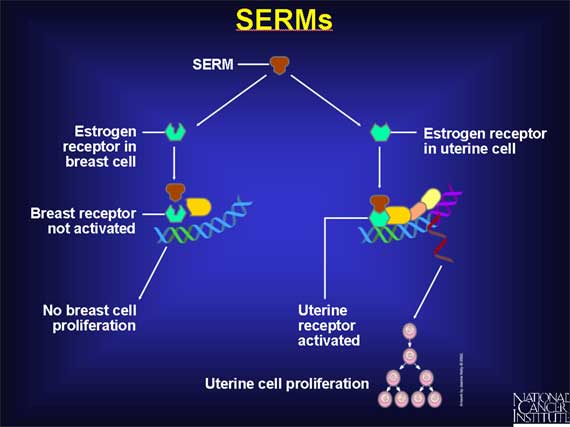|
In working on the development of antiestrogens, scientists have made a somewhat
surprising discovery. Some drugs that block the action of estrogen in certain
tissues actually can mimic the action of estrogen in other tissues.
Such selectivity is made possible by the fact that the estrogen receptors of
different target tissues vary in chemical structure. These differences allow
estrogen-like drugs to interact in different ways with the estrogen receptors
of different tissues. Such drugs are called selective estrogen receptor
modulators, or SERMs, because they selectively stimulate or inhibit the
estrogen receptors of different target tissues. For example, a SERM might
inhibit the estrogen receptor found in breast cells but activate the estrogen
receptor present in uterine endometrial cells. A SERM of this type would
inhibit cell proliferation in breast cells, but stimulate the proliferation of
uterine endometrial cells.

< Previous | Index | Next Slide > |